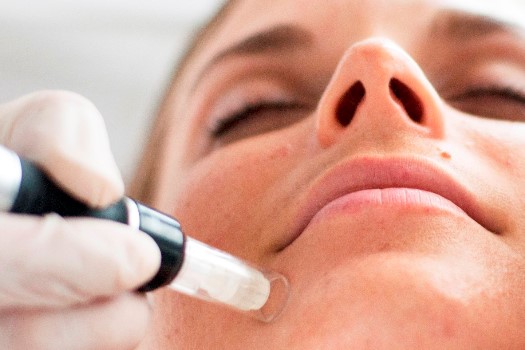If you’re a business owner or therapist who offers microneedling, it might be time to ensure your skills are up to scratch – and if not, sharpen them.
By Jenni Gilbert.
Dr Lance Setterfield, author of The Concise Guide To Dermal Needling book and online course, considered one of the foremost experts in the procedure in the world, caused a stir among the Australian aesthetics community when he posted on Facebook on August 27 that he was postponing his training workshops here, planned for October.
Under the heading ‘Good News, Bad News, Good News’ he wrote:
“I have it on good authority that Australia is going through a major reform in the area of regulations for microneedling … I think Australians ought to be congratulated on being ahead of the curve as far as taking control and creating standard protocols.
“Standardisation of microneedling worldwide has long been in need of this kind of formalisation.
“The bad news, so to speak, is that for all of those who have been waiting … for my trip to Australia are going to have to wait a little longer. Apparently, authorities have expressed concern that overseas trainers are coming to Australia and offering training that is `outside’ of current regulatory guidelines.
“The good news is that there is potential for my course to become accredited in Australia.”
SPA+CLINIC canvassed our industry contacts and although found no evidence of a major reform pending, it’s a timely reminder.
Just as salons, spas and clinics need to be scrupulous that their use of laser and IPL devices abides my existing regulations, pending a Government review of who can use them in future so too should any business owner and their therapists offering microneedling ensure they are razor sharp about their safety protocols and procedural skills.
While the regulations around who can provide treatments is fairly comprehensive, “there is no national standard, law or ruling that states a therapist cannot draw blood,” says April Jorgensen, director of the Australasian Academy of Cosmetic Dermal Science (AACDS), which offers nationally accredited graduate courses in dermal therapies encompassing skin needling theory and practical training.
“Hence, a therapist can essentially use any needling device their insurance policy allows them to use.
 “A qualified beauty therapist is capable of performing skin needling, though a dermal therapist with specific training will have a greater depth of knowledge and skill.
“A qualified beauty therapist is capable of performing skin needling, though a dermal therapist with specific training will have a greater depth of knowledge and skill.
“Specific training in infection control, preventing and treating needle stick injuries and identifying potential interactions and reactions to topical anaesthesia are essential.”
To put it bluntly, sticking sharp needles into the skin provokes a healing response that generates the production of more collagen and elastin. Ergo, makes skin look younger.
It’s important for your clients to understand that microneedling is not a quick fix treatment and usually a series of treatments are required for optimum results.
But for those who are doing everything by the book, microneedling offers enormous potential to grow your business.




